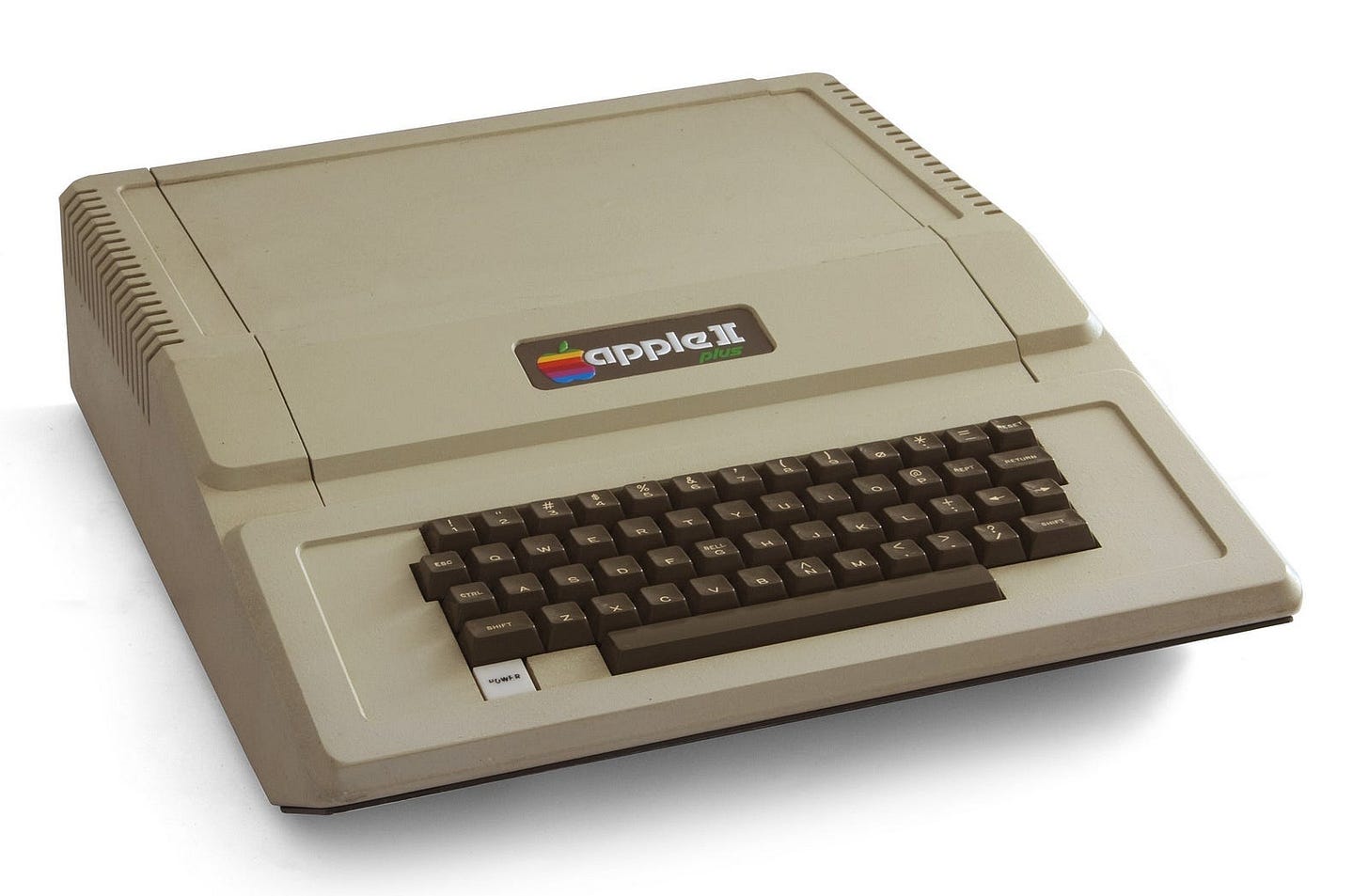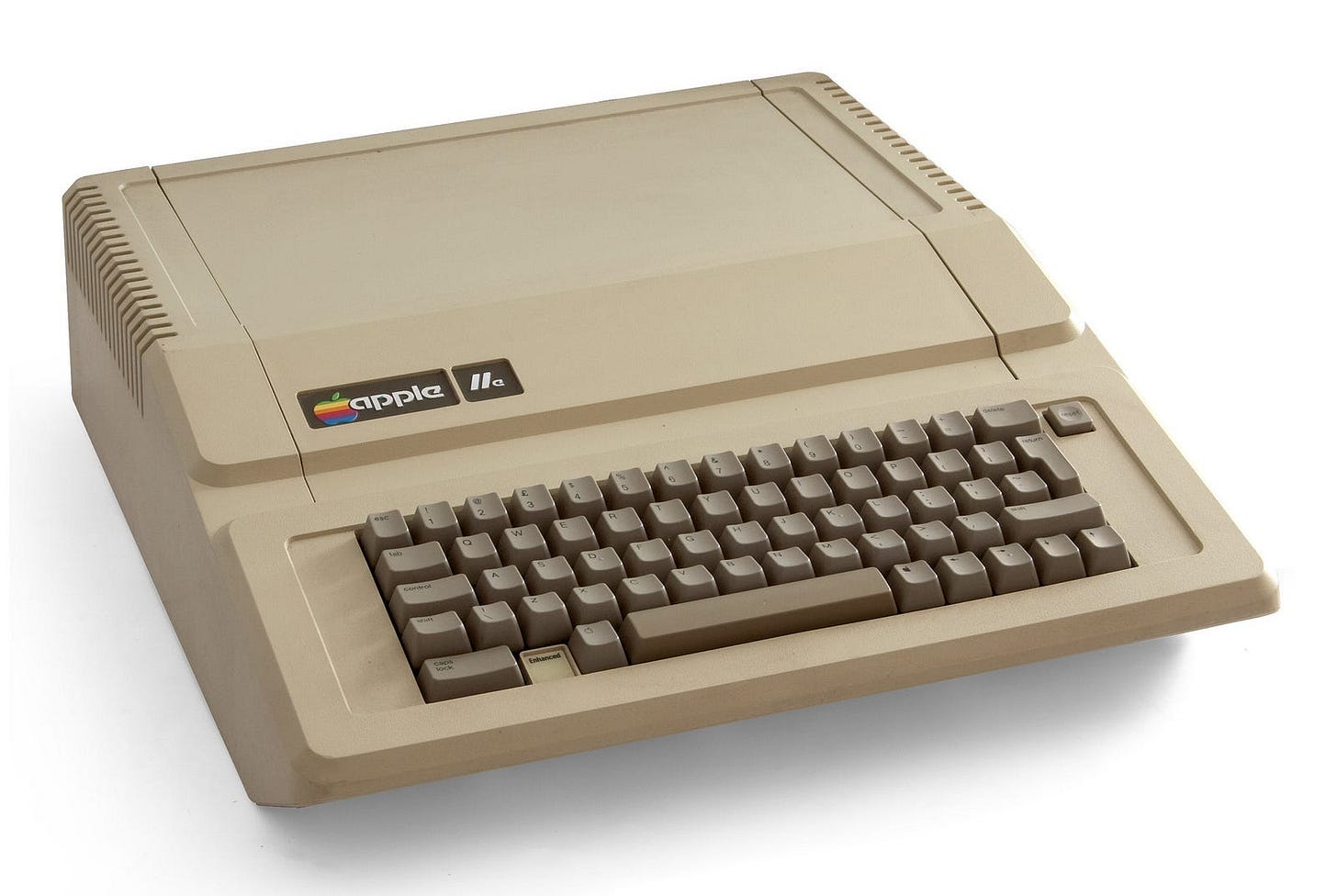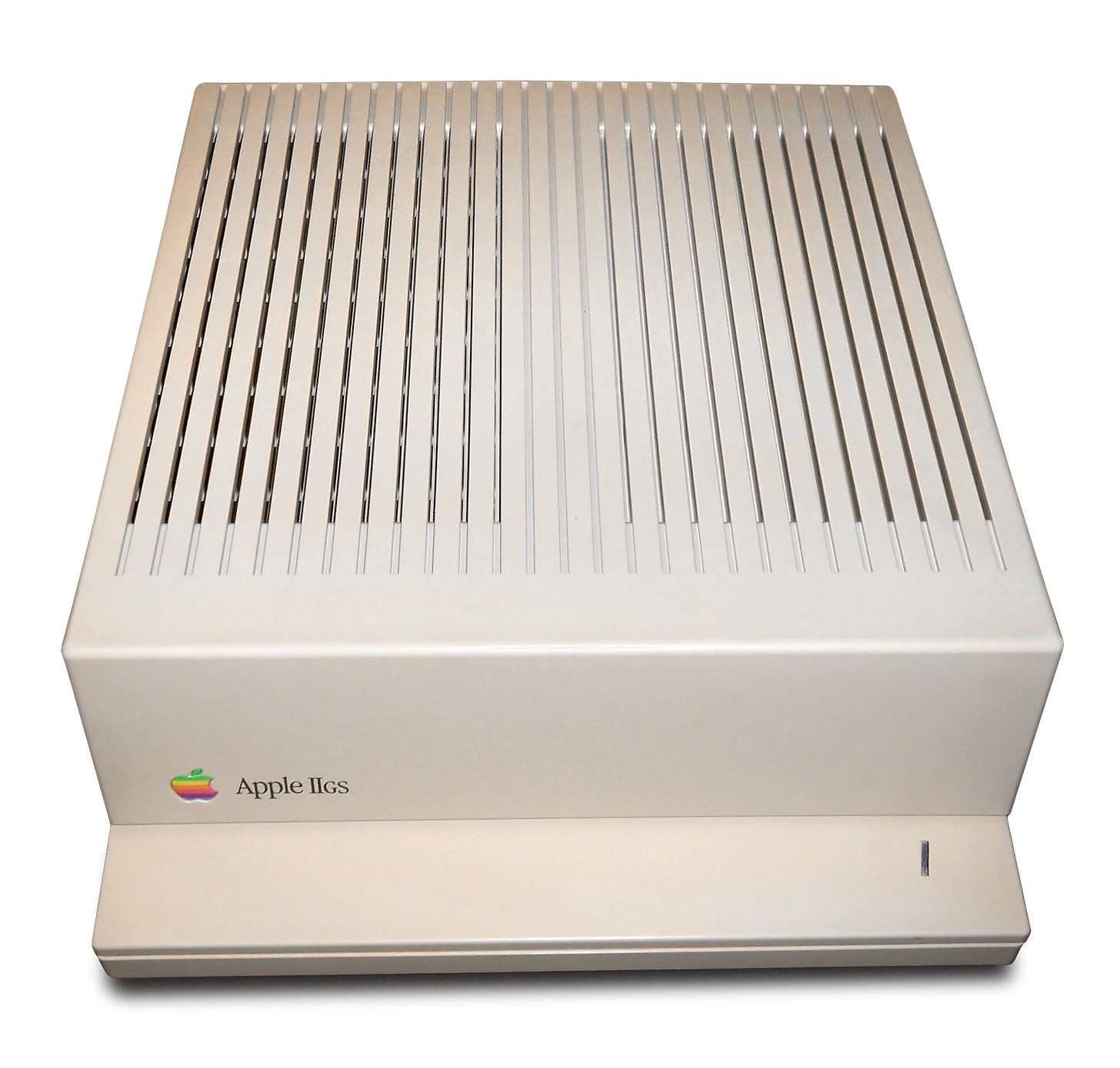The Apple II Series: A Brief Overview
The evolution and features of the Apple II line from 1977 to 1988
Introduction
The Apple II was one of the “1977 Trinity” of personal computers. Alongside the Commodore PET and TRS-80, it marked the beginning of mass-market computing in the US, building on earlier hobbyist systems.
In the UK, the Apple II was used in schools, while home enthusiasts used early kits such as Acorn’s System 1 and Sinclair’s MK14, followed by machines like the Acorn Atom. These paved the way for the BBC Micro and Sinclair home computers, which became very popular in the early ’80s, alongside countless other machines.
The remainder of this article gives an overview of the Apple II line. (For my personal recollections, see Remembering the Apple II Series.)
1977: Apple II
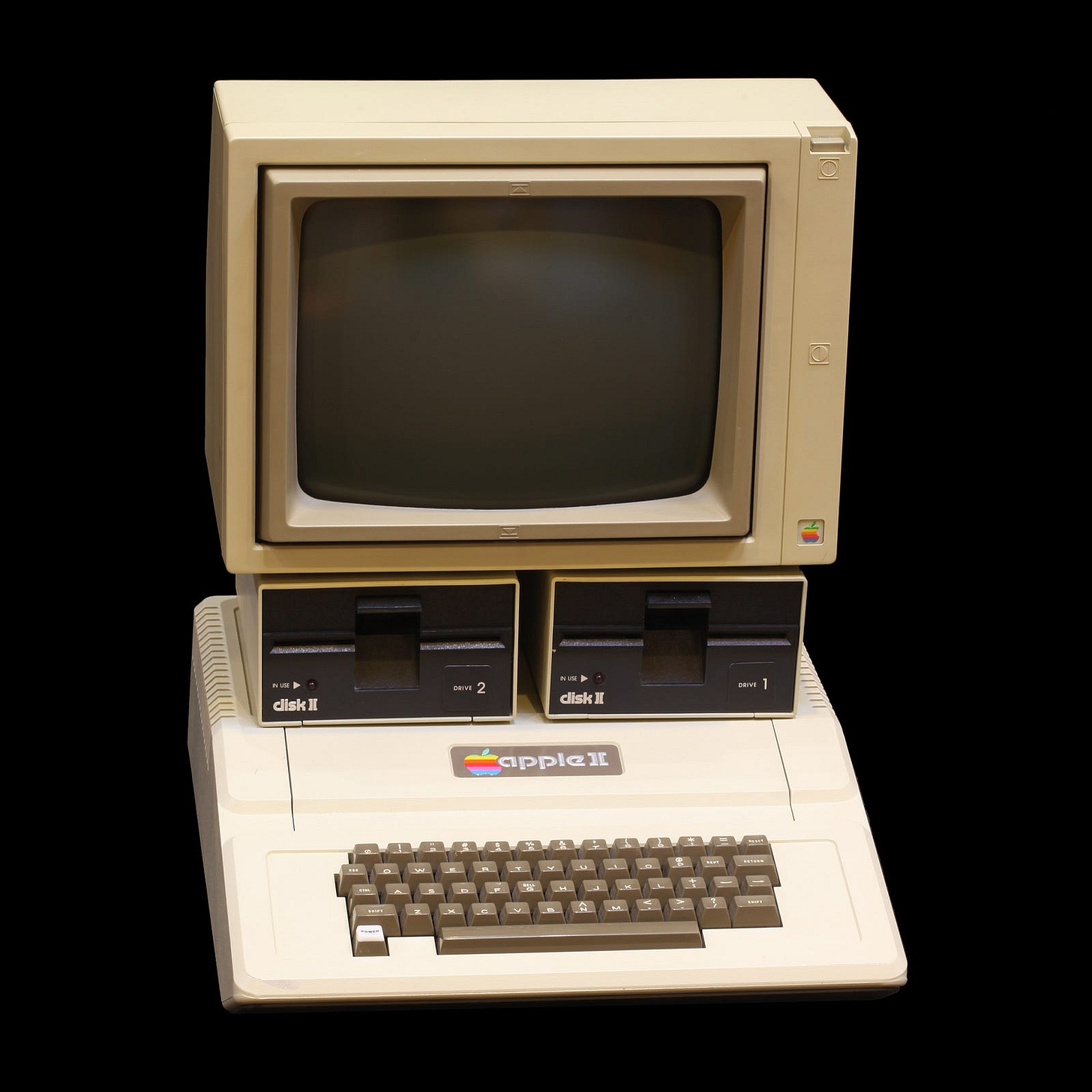
The Apple II superseded the Apple I, just over a year after its release. Improvements included colour, sound, and a plastic case. Being such an early machine meant the specification was still quite basic.
It had 4–48 KB of RAM, and its 6502 processor ran at 1 MHz. (I’ll not get bogged down with precise frequencies and PAL vs NTSC differences here.)
The graphics resolution was 280 x 192 with 6 colours (hi-res), 40 x 48 with 16 colours (lo-res), or 40 x 24 text with up to 16 colours. Monochrome monitors were often used for text. An optional add-on card could provide 80-column text.
Sound was 1-bit, which was very limited compared to slightly later machines with dedicated sound chips, such as the Atari 800 and Commodore 64.
The built-in Integer BASIC, as you might guess, lacked support for floating-point numbers. Lowercase letters were also absent. The keyboard was of good quality but did not include auto-repeat. Instead, it had a REPT key that could be held down to make a key repeat.
Despite its fairly modest features, the Apple II was a robust, high-quality machine, and the eight expansion slots allowed for a wide variety of add-ons.
Programs could be stored on audio cassettes using a normal domestic tape recorder. However, the optional floppy disk drives were so common that it was rare to see a machine without at least one.
1979: Apple II Plus
The Apple II Plus had an increased minimum RAM of 16 KB. It also added Applesoft BASIC, which was written by Microsoft.
Although Applesoft BASIC was slower than Integer BASIC, it supported floating point arithmetic, as well as adding more features. It became the standard BASIC for the Apple II.
Graphics and sound capabilities stayed the same.
1983: Apple IIe
In 1980, before the Apple IIe, Apple tried to make a machine more suitable for the business market — the Apple III. However, early machines had problems and were recalled, which damaged their reputation.
Ultimately, the Apple III was not successful. Instead, the Apple II line continued with the introduction of the Apple IIe in 1983, and the Apple III was discontinued in 1984.
The Apple IIe was the most popular model in the series. It had 64 KB of RAM, expandable to 1 MB. An important addition was support for lower-case letters, and the keyboard finally got auto-repeat, instead of using a separate REPT key.
Graphics and sound were the same as before. However, in 1985, an enhanced version became available with built-in 80-column text support. When fitted with a memory expansion, it could also support double hi-res graphics at 560 x 192 with 16 colours.
The enhanced IIe also used the CMOS version of the 6502 processor. However, it still ran at 1 MHz.
1984: Apple IIc
The Apple IIc was a compact machine based on the enhanced Apple IIe, with a built-in floppy disk drive and 128 KB of RAM. It had the functionality of multiple expansion cards already built in for disk, serial, parallel, extra RAM, and mouse support. That was just as well, given that it had no expansion slots.
The IIc was small and easy to set up, but it still lacked any sound and graphics improvements over earlier machines. However, it did support double hi-res graphics mode as standard, thanks to its extra memory.
It was the only member of the Apple II series to use an external power supply “brick”.
1986: Apple IIGS
The Apple IIGS was the pinnacle of the Apple II series. After the compact IIc model, the expansion slots last seen in the IIe were back again.
The “GS” stood for graphics and sound, and it had a more powerful 65C816 processor running at 2.8 MHz. There was 256 KB / 1 MB of RAM (expandable to 8 MB).
For graphics, the IIGS featured some new modes, with 320 x 200 with 16 colours, and 640 x 200 with 4 colours, both from a palette of 4096 — a very significant step up. In addition, it still supported the older graphics modes.
The IIGS was the only model with improvements in the audio department. Its sound chip was very powerful, with 32 channels and 8-bit wavetable synthesis. That was much more advanced than the SID chip found in the Commodore 64, and more like the sound facilities found in the Apple Macintosh and Commodore Amiga — though the IIGS still had more channels than those machines.
The IIGS was the first Apple machine to feature the ADB connector for keyboard and mouse, which appeared on later Macs. When running GS/OS the IIGS had a Mac-like graphical user interface.
Despite its advanced features, the IIGS was also capable of running software written for earlier Apple II models, with a choice of two speeds. That made it a very flexible machine. (Not all old software worked at the higher speed, however.)
1988: Apple IIc Plus
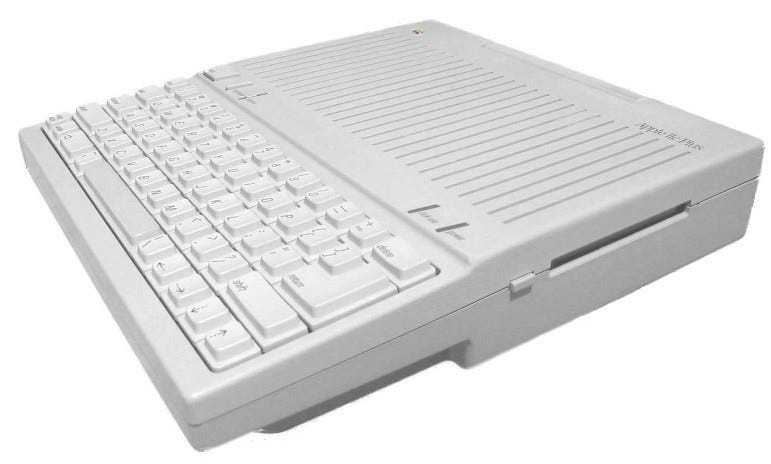
The Apple IIc Plus was the last of the Apple II series, and it improved on the IIc in a number of ways.
Its CMOS version of the 6502 processor ran at 4 MHz — four times the speed of the earlier IIc — making it the fastest-ever model for running ordinary Apple II software (as opposed to IIGS-specific software). A built-in mains power supply did away with the need for an external power brick, which the IIc required.
Finally, the IIc Plus had a 3.5” floppy disk drive, which offered more speed and capacity than its predecessor’s 5.25” drive.
Do you have memories of using any Apple II models? Share your thoughts in the comments section below.
~ Alan ~
Related articles
Personal recollections of using various Apple II models in the ‘80s:
Remembering the Apple II Series (Substack)
External links
This is an updated version of an article first published several years ago on two now-defunct blogs, and more recently on Medium.



